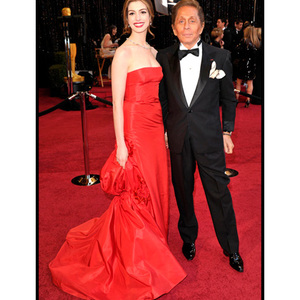
It took me a minute to figure out why I’d purchased “invisible spinach” at Joann’s. Then I had to laugh.
That’s just Joann’s receipt shorthand for one invisible zipper, color spinach.
Every time I take a look through Fairchild’s Dictionary of Fashion, I’m struck by all the weird sewing and fashion terms. They, too, make me laugh or wonder how on earth did THAT get named … THAT?
I’ve included below just a few words or phrases I’m curious about. Some I’ve found answers for, but others still puzzle me. If you know more, share! And please comment with any funny, odd, or strange sewing or fashion terms you’d like to get to the bottom of. I’m sure the Threads community can come up with the correct answers!
Albatross: Fairchild’s describes this as a type of lightweight wool. I’m sure “The Rime of the Ancient Mariner” can’t be the source (that albatross wasn’t light!). NarrowFabricsManufacturers.com has this explanation: “So named because the texture resembles the breast of an albatross.”
Bugle beads: Personally, I never thought they were shaped all that much like bugles, so it made me curious. Dictionary.com described the usage as of “obscure origin” but likely from the late 16th century and possibly linked – through Middle English and Old French – to the Late Latin “bugula” of “bugulus” for cow. Why? Apparently because cow horns were used as instruments and the word persisted through to the modern bugle horn. Whew, long journey for a simple word. The entry also included an adjective form – “bugled” means “to be ornamented with bugles.”
Tailor’s ham: Easy! The shape, of course, is like a big ol’ ham. I just wonder if it ever had another name, before some tailor said, “Could you hand me that … pressing thing… that’s shaped like a … ham?” This poor notion never had a chance. The name stuck. Wikipedia did have the interesting bit of trivia: there was a New Jersey company that sold pork rolls called “Taylor’s Prepared Ham.”
Ticking: I’m stumped! I know what it is, but have no idea why it’s called that. If you know, please fill me in!
Worsted: According to the Reader’s Digest “New Complete Guide to Sewing,” it’s a “Type of wool yarn and fabric in which the fibers are carded and combed to remove short fibers. Worsted have a smooth surface…” But why is it called “worsted”? According to Wikipedia, the name comes from the English village of Worstead, famous for yarn and fabric manufacturing since the 12th century.
Are there any sewing terms you’ve wondered how they got their name? I have to stop, but I’m intrigued by cat stitch, Belcher handkerchief, kitten heel, bodkin… the list goes on. Perhaps I can do a post in the future, with more terms and explanations from Threads readers.
































Feed dogs - I'd like to know where that one comes from!
Hi, I like these links.really interesting...
Here's something on ticking:
"cloth covering for mattresses or pillows," 1640s, from tyke (modern tick) with the same meaning (mid-14c.), probably from M.Du. tike, a W.Gmc. borrowing of L. theca "case," from Gk. theke "a case, box, cover, sheath" (see theco-).
Alas, I've lost touch with an old colleague who was a German philologist and could have helped with that one, and likely with others as well.
I always find that Fairchild's raises more questions than it answers, just because there's so much in those books.
Feed dogs: the "feed" part makes sense, as these little things feed the fabric under the presser foot. Here's an old def. of "dog":
"any of various usually simple mechanical devices for holding, gripping, or fastening that consist of a spike, bar, or hook."
Feed dogs maybe not be spikes, but you can see how "bar" or "hook" pertains, even though they're more of a ridged bar.
How about "thimble"? I'd have guessed that it was a word form similar to "handle," with the -le suffix indicating a tool used by or related to the thumb (for thimble) or hand (for handle). But see below:
Due to the thimble's bell shape and the fact it was meant to be worn on the thumb, the original name was thought to be "thumb bell." "Thimble" seems to be a logical progression of "thumb bell," but according to Fiona Ure in her Collector Cafe article, Thymels, "Thimble" comes from the old English word "thymel," which is a finger stall, a material meant to protect an injured finger. So there are two schools of thought to the etymology of the word "thimble."
Yes, we could go on and on with this!
Here's another comment on ticking...
http://www.wisegeek.com/what-is-ticking.htm "In the days when people slept on straw ticks for mattresses, and used feather pillows, they needed a fabric that was sturdy and closely-woven enough to keep the feather shafts (or straw fragments!) from working their way out and poking the skin. Ticking fabric was the answer. It is a heavy, sturdy fabric with a close, even weave. Feathers usually have a difficult time breaching this material."
So the real question is, why were they called "Straw ticks"!
where does 'bottom weight' come from - description used for some fabric?.
Fat quarters!!! Love the expression but wonder how pieces of fabric for quilting ever got that name.
I have always assumed that "bottom weight" refers to fabrics which are suitable for clothing items which you wear on the lower half of your body, i.e. skirts, pants, shorts, etc. Agree?
From
http://www.wisegeek.com/what-is-a-donkeys-breakfast.htm
It is derived from the Middle Dutch tike, which means “a cloth covering for mattresses.”
A "fat quarter" is a quarter yard of quilting fabric which is not cut in the traditional "sewing" way (9 inches by 44 inches), but instead is cut at 18 inches by 22 inches, thus making it "fatter." This gives you the same surface area as a traditional long, skinny quarter yard, but the shape of the piece is more useful for cutting out standard quilt blocks with less waste. The name is fun! My quilt shop has a big fat quarter sale on "Fat Tuesday" each year. I love the creative ways in which quilt shops fold sets of fat quarters together. Check them out sometime.
And some of us were even fortunate enough to have slept under feather ticks when we were young. :) My grandma's were filled with feathers and down from her own geese that used to chase me around the barn yard! The ticking(fabric) was covered by a duvet.
Being a New Jersey native, I have to comment on taylor ham (the food variety). There is still a company called Taylor Provisions in Trenton NJ. They still make Taylor Ham(aka pork roll). You haven't lived until you've had a grilled taylor ham and cheese sandwich. But, apparently, it is a very regional item. My family discovered this while vacationing in the Adirondack area of NY state. Taylor ham was no where to be found. We've learned to bring it with us when we travel outside of NJ.
I have to comment to Sewnmom, I lived in Northern Jersey till I was 18 and then southern NJ till I moved to Va two years ago. One of the things we miss the most is a good ole pork roll sandwich. We have finally found it at Krogers for $9.99 a pound and it tastes even better at that price. Whenever someone goes to Jersey or comes here we ask them to pack a cooler and bring it with them. I still chuckle whenever I see a tailor ham term used, oh it makes the mouth water!
Worsted is combed and not carded. The resulting yarn ia smoother because the fibers all run in the same direction, tip-to-butt or butt-to-tip. Combing tends to sort the fibers by length while carding mixes them. If a napped fabric is wanted yarn from carded fiber will work better that that from combed fiber.
I found the reason that ticking fabric is called by its unusual name. Here's what I found, from http://www.wisegeek.com:
In the days when people slept on straw ticks for mattresses, and used feather pillows, they needed a fabric that was sturdy and closely-woven enough to keep the feather shafts (or straw fragments!) from working their way out and poking the skin. Ticking fabric was the answer. It is a heavy, sturdy fabric with a close, even weave. Feathers usually have a difficult time breaching this material.
It makes sense now, doesn't it?
I'd always wondered about the term feed dogs too.. but seeing the explanation by Skymom, it reminded me of something my Dad had on his workbench. He called it a bench dog, and it was, indeed, a simple device for holding onto a piece of wood. It was a shaped metal form bolted to the bench top, and a second metal piece fit loosely into the first one. You slipped a piece of wood between the two pieces and gave it a knock with a hammer to wedge it, and the friction would hold the piece for you to work on. I always wondered why they were called bench dogs too.. and now I know. I love finding out where words come from.
I've also wondered why a gadget I first knew as a 'third hand' is also known as a sewing bird. Third hand makes sense, but sewing bird ? Maybe because they usually perch on the edge of a table or shelf to hold the fabric, thus, I suppose, might remind someone of a bird perched on a branch ? I have no idea if that's where the term 'bird' originates, but can think of nothing else that fits.
The name "sewing bird" comes from the shape of some of the third hand devices made in Victorian times. The holding part was shaped like a bird. It had a clamp that would attach to a table edge with the bird perched on top. You would clip the bird's beak onto your needlework to hold it as the "third hand" leaving your hands free to do the work.